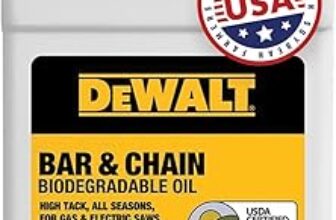
How to Remove Grass Stains
Why I Never Let Grass Stains Win
I refuse to let grass stains ruin clothes; over years I developed fast, repeatable steps on How to Remove Grass Stains — from identifying fabric to treating stains and restoring garments without guessing or damage, so you can fix most spots confidently at home quickly and easily today.
What I Keep on Hand
I keep:
Step 1 — Act Fast and Check the Label
Want better results? The fastest five minutes often decide success — and some fabrics demand special care.Turn the garment inside out and locate the care label. Act immediately — fresh grass stains are far easier to remove, so I start treating spots the minute I notice them.
I always flip the item to protect the outer fibers while I read instructions. For example, a cotton T‑shirt from soccer practice gets a quick at‑home treatment; a silk blouse from a special event gets extra caution.
On the care label, check:
If the label says Dry clean only, I usually take it to a professional. If it says Hand wash cold or lists gentle cycles, I’ll attempt a careful at‑home fix, testing first on an inconspicuous seam. Always note restrictions before applying water, soap, or scrubbing — that little check often saves a ruined garment.
Step 2 — Remove Debris and Rinse Cold
Does scrubbing make it worse? Not if you rinse the right way — cold water is the unsung hero.Brush off any dried grass bits with a soft brush or your fingernail. Use an old soft‑bristled toothbrush or gently scrape along the fibers with a fingernail to lift crusty fragments without grinding them deeper. For delicate fabrics, work very lightly.
Hold the stained area under cold running water from the fabric’s reverse side to flush out as much green pigment as possible. Aim the stream so water passes through the stain toward the outer face — this pushes the grass out instead of further in. Keep the water cold; watch the color begin to lighten as particles wash away.
Remember these quick rules while you rinse:
Proceed to pretreating once loose debris and surface pigment are gone.
Step 3 — Pretreat with Detergent or Dish Soap
A little soap, a little patience — this is where most stains give up quickly.Apply a small amount of liquid laundry detergent or a grease‑cutting dish soap directly to the stained area. I usually squeeze a dime‑to‑quarter‑size drop (or about ½ teaspoon) so I have coverage without soaking the fabric.
Work the soap in gently with your fingers or a soft toothbrush. I use my fingers on delicates and seams, and a soft toothbrush for thicker cottons or denim—light circular motions, not brutal scrubbing.
Let the pretreatment sit for 5–10 minutes; I leave it longer (15–30 minutes) for set‑in stains. Then rinse with cold water to wash away loosened pigment.
This step helps break down grass pigments and oils before deeper treatment.
Step 4 — Bring Out the Big Guns for Stubborn Stains
When basic soap won’t do, I reach for enzymatic cleaners, vinegar, or oxygen bleach — each has its superpower.Reach for an enzymatic stain remover when the detergent didn’t do the job—I like those for organic stains because enzymes break down plant proteins. Apply per the product directions, let it sit, then rinse.
Make a paste of baking soda and water for gentle abrasion: mix to a toothpaste consistency, spread on the stain, work lightly with a soft brush, let dry 10–15 minutes, then rinse. This helped lift a soccer‑field stain from my kid’s cotton tee once without fading the color.
For colorfast fabrics, dab white vinegar or rubbing alcohol on the spot with a cotton ball to lift pigment—blot, don’t rub. Use in a ventilated area and never mix vinegar with bleach.
For whites and confirmed colorfast cottons, soak in an oxygen bleach solution (follow package directions) to brighten and remove residual green.
Step 5 — Wash the Right Way (and Inspect Before Drying)
I never assume the washer finished the job — drying can make stains permanent.Wash the item on the warmest setting safe for the fabric, using my regular detergent. Check the care label: cotton and poly blends usually tolerate warm water; delicates and wool need cold or gentle cycles.
Use a full detergent dose and run the normal cycle. Add an extra rinse if you’ve used a lot of pretreatment so no residue remains.
Inspect the stain while the fabric is still wet. Lay the garment flat or hold it up to the light and look closely; if you see any trace, repeat the pretreatment steps (detergent scrub, enzymatic remover, or a baking soda paste) and wash again.
Avoid tumble drying at all costs until the stain is completely gone — heat will permanently set leftover pigment.
Step 6 — Finish, Dry, and When to Seek Professional Help
Still visible? Don’t panic — there’s usually a last resort, and sometimes I send it to the pros.Soak the garment in an oxygen-bleach solution for several hours if the stain persists; I often let clothes sit 4–6 hours (follow the product directions and test a hidden seam first). Use lukewarm water for better activation, and rinse thoroughly afterward.
Send delicate, vintage, or stubborn pieces to a professional cleaner rather than keep risking damage. For example, I’ll never try oxygen bleach on a silk blouse, a beaded dress, or a wool coat — I take those straight to a pro to avoid shrinking, color loss, or fiber weakening.
Dry flat or air-dry to preserve shape and avoid heat setting any faint residue. Lay sweaters on a towel, reshape tees, or hang light garments. I always recheck the stain while the fabric is still damp and in good light.
Recheck the stain carefully before ever using a dryer; only tumble dry on the recommended heat if the stain is completely gone.
Quick Recap and My Go-To Tip
Act fast: rinse cold, pretreat, escalate to enzymatic or oxygen bleach for stubborn spots, and never heat-dry until the stain is gone. I keep a small stain kit handy—try it, tell me how it worked, and share your results today.








Really good overall, but I’d have liked a short section or callout on eco-friendly options: biodegradable detergents, plant-based enzyme cleaners, and avoiding harsh chemicals. Not everyone wants oxygen bleach even if it’s safer than chlorine.
Also, some people might appreciate a vegetarian/vegan product rec list (lol not necessary but hey).
Great point, Ben. I tried to keep it broadly applicable but I can add an eco-friendly callout with product suggestions and DIY-until-safe options in the next update.
Yes please — eco options are why I buy certain brands. A few certified eco cleaners do work well.
Thanks — looking forward to that. Keep up the helpful content!
Great guide. I specifically appreciated the “big guns” section — enzymes are underrated. If the stain is protein-y (like grass has some protein/plant enzymes?), enzyme cleaners actually do wonders.
Also, the warning to inspect before drying is GOLD. Nothing worse than setting a stain forever.
Yup. Found that enzyme spray + a short wash cycle removed a nasty stain from my son’s soccer jersey.
Totally — enzymes break down organic components that regular detergent can miss. And 100% agree about checking before the dryer.
Great resource. As a coach, I deal with grass stains daily. A few practical notes from my experience:
– Pretreat as soon as players come off the field.
– Keep a small bottle of concentrated dish soap in the kit for quick spot treatment.
– For jerseys, avoid bleach as it wrecks numbers/logos; enzyme sprays work best.
– If it’s a high-value piece (sponsor logos), send it to pro cleaners if the DIY route fails.
This guide matches what I tell parents, so thumbs up.
Thanks Arjun — awesome field-tested tips. Keeping a small bottle in the kit is genius for games.
As a parent, thank you coaches for making life easier haha.
Liam — I use a concentrated enzyme spray by Brand X (available online) and a generic dish soap for quick fixes.
Arjun — any brand recs for enzyme sprays that are gas-station friendly for coaches?
Tried the cold rinse step but the stain barely budged on my denim. I scrubbed with a brush, used detergent, even pretreatment and it looked only slightly better. Are jeans just doomed? Anyone got specific tips for denim?
I had this too. After a few rounds I used a paste of baking soda + water, let it sit, then wash — surprisingly helped lift some color.
Also try an enzyme spray specifically for grass/stain removers; leave it longer than you think.
If it’s dark denim, dye loss is a risk. Take it slow and test hidden seams.
Thanks all — I’ll try the baking soda paste next. Denim is stubborn but maybe not hopeless.
Denim can hold onto grass pigment. Try pretreating with a liquid detergent and let it sit 15-30 minutes, rub gently with a soft brush, then wash in the warmest water safe for the fabric. If that fails, an oxygen bleach soak may help — avoid harsh scrubbing which can fade the dye.
Super helpful, saved my favorite shorts. Followed Step 1-4 exactly. Quick question: do you recommend re-treating after one wash if the stain is faint?
If the stain is faint after one wash, it’s usually fine to re-treat and wash again before drying. Inspect after the second wash before putting in the dryer.
Great — will do that. Thanks!
Nice, science-light but practical guide. To add: grass stains are mostly chlorophyll and other plant pigments bound to fabric fibers, so cold water prevents setting and enzymes break down the organic matter. For anyone into more chemistry, a weak oxidizer like sodium percarbonate (oxygen bleach) is effective without the risks of sodium hypochlorite (regular bleach).
Be cautious with fabrics that have optical brighteners — those can complicate perception of stain removal.
This is exactly the kind of explanation I wanted. Science makes me feel less like I’m guessing.
Happy to help — if anyone wants product recs I can suggest a few gentle enzyme cleaners.
Thanks for the mini-chemistry lesson, Daniel — that’s exactly why oxygen bleach is my go-to for safety and effectiveness.
Good article. I noticed one step didn’t mention sun bleaching as an option — does sunlight help or hurt? I sometimes leave a damp stained shirt in the sun but I’m not sure if that’s smart.
Sunlight can help fade some stains but can also fade dyes. It’s okay for whites or durable fabrics, but avoid prolonged sun exposure for bright colors — that can cause uneven fading. Best to try other methods first.
Thanks — I guess I’ll stop sun-tanning my shirts then 😅.
Okay this was thorough — loved the step-by-step. Quick question though: I ruined a white polo by trying bleach after a grass stain (rookie move). The guide says “bring out the big guns” but doesn’t explicitly say which bleach is safe.
I know you mentioned oxygen bleach elsewhere, but can someone confirm: oxygen bleach (like OxiClean) is safe for most whites? Or are there fabrics that will still react badly? I’m paranoid now.
Also — great note about checking the label. I didn’t last time and paid for it.
I use OxiClean on my whites all the time, works great. But NEVER mix with chlorine bleach — that combo is dangerous.
Pro tip: if the label says ‘bleach when needed’ it usually means chlorine is okay, but again test first. If polo has any trims/print, be careful.
Oxygen bleach is generally much gentler than chlorine bleach and is safe for most washable fabrics, including many whites. Avoid using any bleach on wool, silk, leather, or anything labeled “dry clean only.” When in doubt, test a small hidden area and follow the garment label.
Love this guide — SO practical. I always panic when my kid comes in with green knees, but the “act fast” tip really saved me last week. Used dish soap + cold water and the stain lifted way more than I expected.
One tiny note: I tried vinegar once after pretreating and it seemed to help on a cotton tee. Might not be for delicates though.
Thanks Maya! Vinegar can help neutralize some residues but I usually recommend testing on a hidden seam first, especially for bright colors or delicates.
Yep, I always test on the inside hem — learned the hard way with a neon top 😂.
Good tip about the dish soap. Which brand do you use? I find some are way less sudsy but still work.
Ugh, just learned the hard way: I tossed a stained tee in the dryer because I forgot to check, and now the stain is basically permanent. Any last-ditch fixes after it’s been through the dryer? When should I even call a pro?
I’ve had success with repeating an enzyme treatment then oxygen soak, but it depends how long and how hot it was dried.
Thanks — will try the enzyme route. Lesson learned: always check before drying 😭.